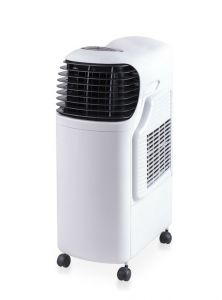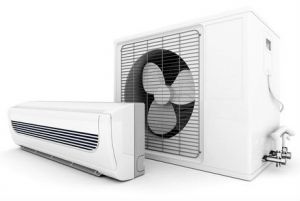Stepping into an air-conditioned room on a hot summer day is always a relief, and with temperatures across Australia warming up it’s an excellent time for anyone in the market for a new air conditioner to consider their options. For many Australians, split cycle air conditioners are the gold standard, but if you’re looking for something more affordable and mobile, a portable air conditioner could be the right fit.
What’s in this guide?
Portable air conditioner vs split system
When purchasing a new air conditioner, there are several factors to consider, including room size, energy-efficiency rating and budget.
Portable air conditioners
Portable air conditioners are excellent at cooling smaller rooms in the home. They’re also a convenient option for those who rent and want to take the unit with them if they move house, or if you need a mobile cooling option you can take from one location to another. Here are some of the pros and cons of portable air-conditioning units:
Pros:
- Mobile – most models stand under a meter tall and are on castor wheels, so they can be moved between rooms.
- More affordable – most units cost between $500 and $900.
- Multi-functional – many portable units also come equipped with heating and dehumidifying capability.
Cons:
- Performance – most only have a power level of around 2kw, which is significantly less than other split system air conditioners or ducted air conditioning.
- Only suitable for small rooms – most units are best utilised in rooms 20m2 or smaller.
- Not energy efficient – these units generally cost more to run, which can get pricey in the summer months.
Split system air conditioners
Split system air conditioners are increasingly popular in Aussie households. Not only are they easy to use, but advancing technology means energy-efficiency ratings are improving and features like air purification and dehumidifying are commonplace. They’re also designed to cool large rooms and have timer and fan-speed settings to help reduce running costs. Here are some common pros and cons of split system air-conditioning units:
Pros:
- Suitable for cooling and heating most houses and apartments.
- Powerful for their size – expect anywhere from 3kw to 9kw of power in most models.
- Convenient and accessible – most units are easily controlled via a wireless remote.
Cons:
- Expensive to purchase – unit costs can range from $500 to over $2,000.
- Installation costs – a licensed technician must install one of these units, which will generally cost between $600 and $800.
- Power consumption – split system units can be expensive to run constantly.
Purchasing an air conditioner
There are many factors to consider when purchasing an air conditioner. Aside from the pros and cons we’ve covered, consider things like:
- Your budget (include power usage, maintenance and installation costs).
- Your cooling needs and the size of the room.
- Whether you’re renting, owning, want a permanent cooling solution or a flexible option.
To help decide which appliance is the best fit for you and your home, check out some of Canstar Blue’s best-rated air conditioners.
Original Author: Veronika Hleborodova






Share this article